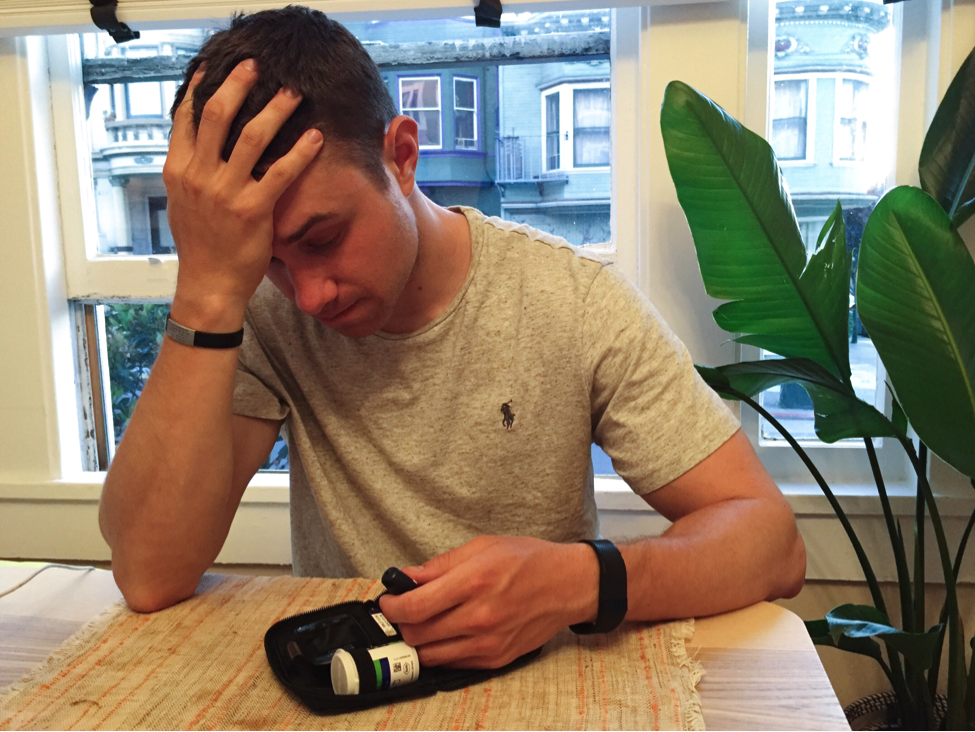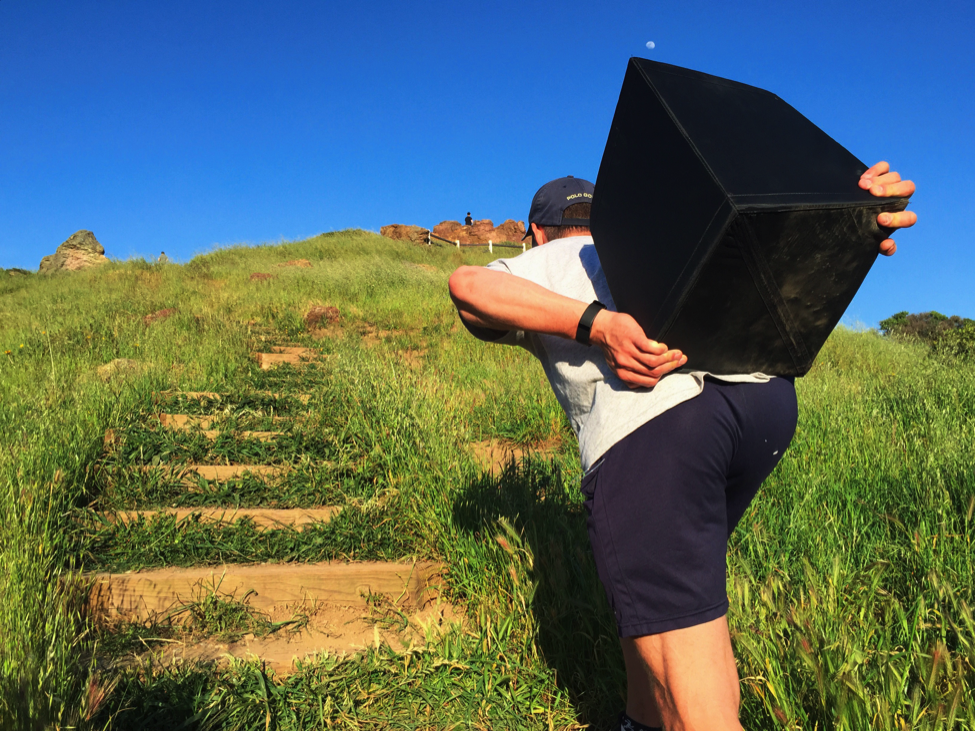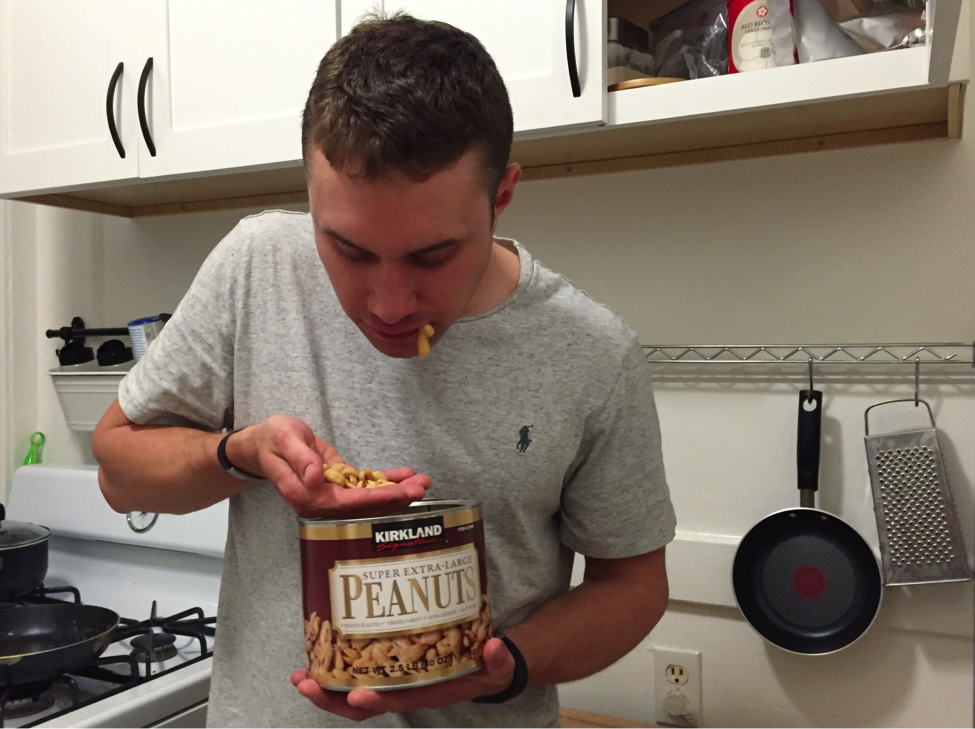The Diabetes Emotional Roller Coaster
By Adam Brown
.jpg) By Adam Brown
By Adam Brown
Diabetes sometimes feels like the ultimate roller coaster: ups and downs, no idea what’s around the corner, and moments where I fear for my life. Part of that ride is an incredible emotional and mental balancing act:
-
Fighting to stay on top of my blood sugars vs. Letting diabetes take over my life;
-
Keeping high standards for myself vs. Becoming my own worst critic;
-
Having a routine for better predictability vs. Rejecting spontaneity and fun;
-
Learning from past mistakes, planning to be safe in the future vs. Forgetting to live life in the present.
.png) This adds up to a lot of mental pressure every day, and along with it, feelings of frustration and failure, struggle, and guilt. Less frequent, but far more awesome, are those occasional days when things go right. This short article depicts my roller coaster of emotions in pictures and quotes, and more importantly, shares the tactics I use to deal with them. I’m not always successful, but writing down what helps me is an amazing reminder – I may not enjoy the diabetes emotional roller coaster, but I have many ways to buckle my seat belt and try to enjoy the ride.
This adds up to a lot of mental pressure every day, and along with it, feelings of frustration and failure, struggle, and guilt. Less frequent, but far more awesome, are those occasional days when things go right. This short article depicts my roller coaster of emotions in pictures and quotes, and more importantly, shares the tactics I use to deal with them. I’m not always successful, but writing down what helps me is an amazing reminder – I may not enjoy the diabetes emotional roller coaster, but I have many ways to buckle my seat belt and try to enjoy the ride.
What emotions do you feel every day with diabetes? What pictures symbolize those feelings? What helps you deal with them? Let me know! And if you find this article useful, check out my book, Bright Spots & Landmines!
1. Frustration and Failure
- “How is this blood sugar possible? I did the same thing yesterday and this isn’t what happened!”
- “Wow, I’m really blowing it today. Nothing is going right. I stink at this.”
- “I exercised and didn’t eat and my blood sugar went UP?! Gahh!!”

What helps me:
-
There are 22+ factors that affect blood glucose: not every out-of-range blood sugar is my fault or even in my control.
-
A 288 or 52 mg/dl is not an indication of “failure” or a “bad grade”; it’s a neutral data point to help me change something right now.
-
Frustration is unproductive and just makes me feel crappy. Asking useful questions is so much better: What can I do in this moment to improve? How can I do better tomorrow? [More on this topic here.]
-
Eating low-carb to reduce big sources of frustration: insulin dosing, carb counting, glucose variability, and insulin sensitivity.
-
Going for a walk outside (even five minutes makes a difference).
-
Taking five deep breaths (count up to five on the inhale, down to one on the exhale).
-
Having a morning routine for more predictability, especially morning exercise.
2. Struggle
- “Diabetes is so much work!”
- “I never get a break from diabetes.”
- “I’m tired of diabetes!”

What helps me:
-
Gratitude – My diabetes “burdens” are tiny compared to places where this disease is still an early death sentence. I have so much to be thankful for – access to insulin, strips, CGM, a pump, healthy food, a city with parks and sidewalks, friends and family to support me – that it would be selfish NOT to work hard at managing my diabetes.
-
Why is my diabetes worth caring about today? When my blood sugar is in range, I’m nicer, more patient, and my best-self with loved ones; I have more energy to do things that make me happy; I smile more and am less stressed; I sleep better; and I can think more clearly (and thus, help more people at my job).
-
Wearing a pump and CGM to reduce some of the diabetes struggle: no daily injections, no taking 12 fingersticks per day. [I know these devices add hassle for some people. For me, they subtract more struggle than they add. Let me know if I can share any tips!]
3. Guilt
- “Why did I stuff my face? Why did I overeat?!”
- “I wish I hadn’t...”
- “How could I make the same mistake again?”

What helps me:
-
Writing my own diet commandments and following them.
-
Understanding my diabetes landmines and steering clear of them.
-
Staying in the present; lots of guilt comes from negative judgments about what I did in the past (e.g., “Why did I eat that?!”). When a bad decision has already happened, I need to acknowledge it, learn from it, and do better next time.
-
Keeping tempting foods out of the house (ideal) or making them harder to access (e.g., out of visible sight in a cupboard, tearing a smaller hole in the package, using a twist tie, having a loved one hide them).
-
Only eating when I actually feel hungry; often, I’m mistaking hunger for thirst or simply boredom. I love Michael Pollan’s advice in Food Rules, “If you’re not hungry enough to eat an apple, then you’re not hungry.”
4. The rare WOOHOO!
- “For once I did things right today – my blood sugar stayed in range (70-140 mg/dl) and diabetes did not feel like a constant struggle. I was in a good mood, treated the people around me well, and had energy to do things I enjoy.”

What helps me:
-
Identify Bright Spots:
-
What did I do to make this great day happen?
-
What behaviors and choices helped keep my blood sugar in range (70-140 mg/dl) today?
-
What was my routine like today – medication, food, activity, stress, sleep?
-
What did I avoid today?
-
How I can have more days like this?
-
Email me if you are interested in my “Bright Spots” list related to food, attitude, exercise, stress, and sleep. I’m working on a project related to this and would love your thoughts!
Special thanks to Priscilla Leung for this article's graphic and pictures!







